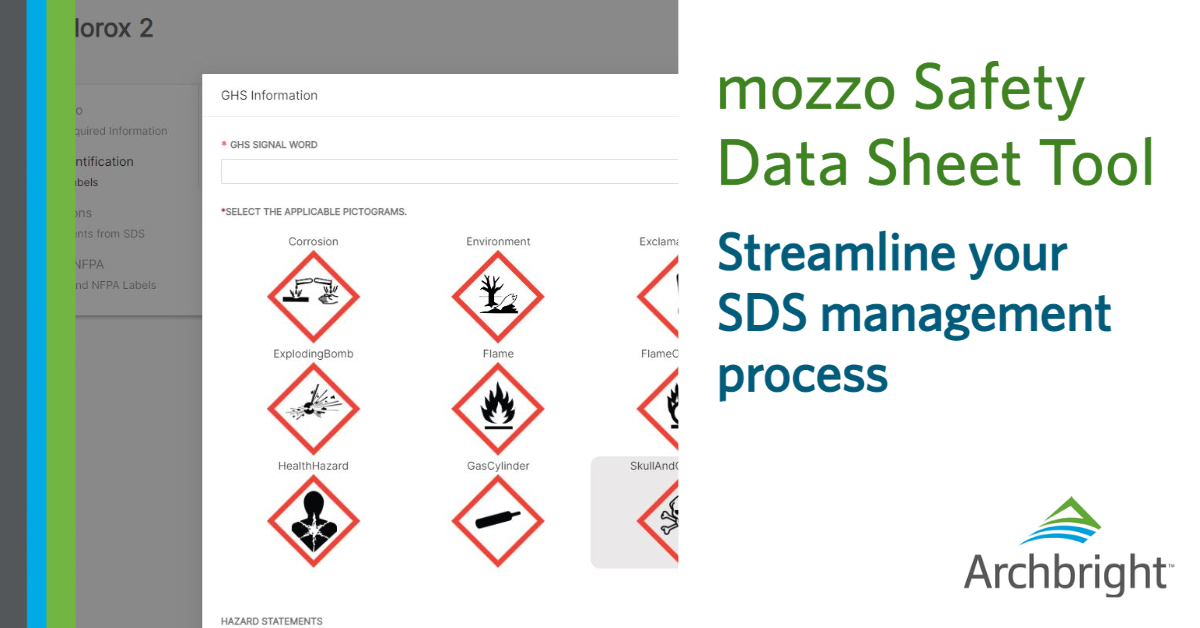1 min read
Job Hazard Analyses: Yep, Your Workplace Needs Them
Regardless of industry, all employers must provide employees with a safe and healthy working environment, free from recognized hazards. While some...
Every employer wants to attract and retain the best workers. There are several ways to accomplish this, such as writing effective job descriptions, offering competitive wages and benefits, and providing career development opportunities. But what about providing a safe workplace? A positive safety culture is another effective tool for attracting and retaining top talent, and to create a positive safety culture, employers must utilize safety metrics. —
Safety metrics are measurements that are used to evaluate and track the performance of an employer’s overall safety program. There are several different types of metrics, such as the size of a safety program’s budget, the number of workplace inspections, and the level of management’s involvement in safety initiatives. Other metrics include identifying injury trends to isolate root causes of hazards, understanding how processes have performed historically to determine how they might perform in the future, and identifying improvement opportunities. While some employers already have robust metric systems, others may feel that they don’t have the resources to create and track safety metrics. These employers might be surprised to learn they already have at least one system in place: their OSHA 300 records.
OSHA 300 is a recordkeeping system that tracks serious workplace injuries and illnesses. OSHA 300 records are required by the Occupational Safety and Health Administration (OSHA) for most employers with more than ten employees. Employers that are required to maintain these records must record serious workplace injuries and illnesses within seven days of the incident on their current year’s 300 Log. The following year, employers must post a summary of the Log, called a 300A form, in the workplace from February 1 through April 30. Some higher-risk employers must also electronically submit their OSHA 300 information.
Employers must maintain their OSHA 300 Logs for five years beyond the running Log for the current year. Employers can learn more about OSHA 300 recordkeeping requirements by reading Archbright’s Blog article OSHA 300: Common Questions, COVID-19, and Potential Changes.
The purpose of OSHA 300 records is to gather nationwide workplace injury and illness data so that the US Bureau of Labor Statistics (BLS) and OSHA can better understand what’s hurting workers and how to implement safety regulations to keep them safe. The OSHA Logs contain two calculations that help track this data:
Knowing your TRIR and DART rates can also be extremely helpful in understanding how the workplace stacks up to others in the industry. For employers who submit job bids for work projects, such as contractors or certain manufacturers, knowing and maintaining these rates can be crucial and can mean the difference in winning a project bid. High TRIR and DART rates can indicate risky business practices, meaning higher insurance costs. When faced with multiple project bids with similar costs, employers will often select the contractor based on who has the best safety records. TRIR and DART rates are even sometimes advertised to attract potential job candidates. Keeping these frequency and severity numbers low is not only good for employees, it’s also good for business.
As data becomes increasingly important, understanding the data and what it represents is equally important. Even though tracking frequency and severity is a key piece of a positive safety culture, some employers may overutilize OSHA 300 metrics by focusing too heavily on the numbers rather than using the information to identify and address the root causes of workplace hazards.
Both TRIR and DART rates are commonly accepted indicators of safety performance at a facility, with some industries relying heavily on them as the sole safety metrics. The downside of only using this information is that both numbers are lagging indicators, representing information on what has happened in the past but offering little insight into what improvements have been made since or any relevant information on the incidents themselves. Additional potential issues with relying solely on these metrics for safety performance include:
Companies that heavily emphasize OSHA 300 metrics may also run into issues with non-reporting. Having no recordable injuries doesn’t always mean an employer has a safe workplace. Some employers suppress reporting to keep incident rates low. Unfortunately, unreported minor injuries may develop into serious conditions that require more extensive treatment. Underreporting also places other workers at risk because it’s hard to correct hazards if they aren’t acknowledged. Without conducting and documenting observations, near-misses, and eliciting feedback on processes, it’s difficult to know if controls are working properly or if it was chance.
Unintentional suppression can also happen when employers incentivize employees to go for periods without reportable incidents. This suppression is so common that in 2016 when OSHA updated its 300 Recordkeeping rule, it specifically addressed employer-sponsored incentive programs. OSHA found that when employers offered employees incentives for not having recordable workplace incidents, employees were less likely to report injuries for fear of missing out on incentives or for retaliation from other employees who were part of a group incentive goal. Under the updated OSHA 300 recordkeeping rule, employers are still allowed to have safety incentive programs, but they need to be safety improvement incentives, such as everyone wearing their safety glasses on the shop floor.
Although lagging indicators like OSHA 300 records have limitations, they are still helpful in understanding the full impact of workplace incidents. Beyond OSHA 300 records, lagging indicators include tracking the total number of work-related injuries and illnesses, not just the recordable incidents, time loss days, restricted duty days, Kept-on-Salary days/costs, personal protective equipment (PPE) attrition/replacement rates, and workers’ compensation insurance increases/decreases. Employers can also look at how likely managers document safety disciplinary action or follow up with new-hire training to gauge the safety culture climate.
While it’s important to track lagging indicators to understand how employees have been hurt in the past, follow-up actions that have been taken, and the results of such, it’s also important for employers to look at leading indicator metrics. Leading indicators are proactive measures that help identify potential safety hazards before they become workplace incidents. For example, employers should look at near-miss incidents, such as a worker who trips over an unmarked step but doesn’t get hurt. A culture that supports this type of near-miss incident reporting allows the employer to take preventative action, marking the step to help prevent someone else from tripping and getting hurt. Near-misses are incidents that did not cause harm but have the potential to. Other leading indicator examples include tracking the number of safety audits and observations being performed, corrective actions being taken following these assessments, and trainings being conducted. Employers can also look at their maintenance logs and safety committee meeting minutes to see how many safety issues are being reported or identified and if corrective actions are being taken.
Utilizing OSHA 300 data is a great start to tracking and measuring safety performance. However, a combination of leading and lagging indicators can provide a more robust, clearer picture of the safety culture, which can be leveraged to attract job applicants.
Employers looking for support establishing or building upon safety metrics are encouraged to contact Archbright. We offer services that can help improve employer processes for effectively measuring safety operations and support with safety activities such as conducting inspections, Safety Committee assistance, safety training, hazard identification, correction, understanding injury trends, and workers’ compensation financial analysis. Employers who have questions or would like further information can contact info@Archbright.com.
.jpg)
1 min read
Regardless of industry, all employers must provide employees with a safe and healthy working environment, free from recognized hazards. While some...

Is your organization one of the millions of workplaces in the U.S. that uses chemicals? Chemicals are found in numerous industries and used in a wide...

Business leaders often talk about the importance of succession planning and developing “bench strength” when discussing the future of their...